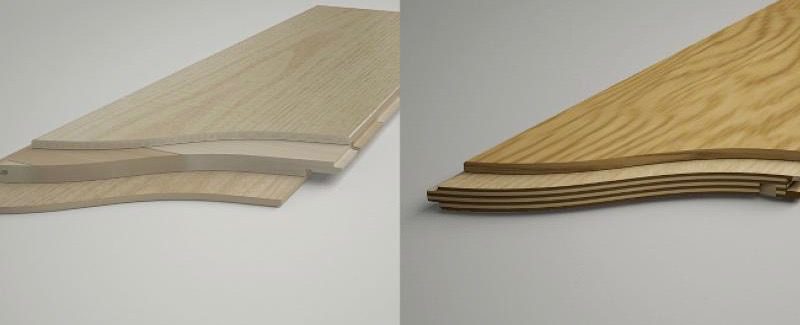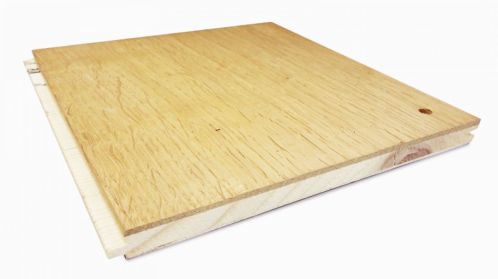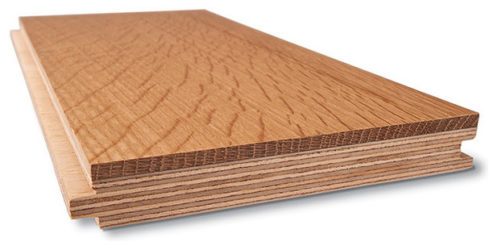
As a highly popular flooring option, engineered wood flooring is a perfect choice for those of you who are looking for a wood flooring option which should withstand moisture and temperature fluctuations, and is suitable over under-floor heating. Engineered flooring has been developed over the years to withstand moisture and temperature fluctuations.
Engineered wood flooring is manufactured by bonding together several layers of plywood (usually from 3 to 12) which are sometimes cross-layered and subsequently glued and pressed together, thus creating an excellent core board. After being prepared, core boards are topped off with a top layer of solid wood, also known as lamella, of virtually any species of wood you want.
If you have picked engineered wood as the flooring option for your project, you can undoubtedly need to consider the species of wood to chose and the finish that works best in the given interior. You need to nake a decision to either use 3-ply or a multi-ply board engineered wood flooring?
Hardwood versus Softwood: How to choose the right wood
Hardwood comes from a tree which sheds its leaves annually, and softwood comes from a conifer, which remains evergreen. Hardwoods grow slower and denser. Softwood trees are known as a gymnosperm. Typically, hardwood flooring has a tongue and groove system.

What is 3-Ply construction?
- Three-ply engineered wood flooring is composed of three layers: Lamella, a core layer and base layer.
- The top layer is your choice of wood species, and the middle layer is made of softwood. Finally, the bottom layer is durable plywood.

What is multi-ply flooring?
- Multi-ply floor board contains multiple layers of plywood for additional strenght and durability.
- Multi-ply floor board is made up of several layers which are bonded together using glue.
- The core of a three-ply board is usually made up of single blockboard.
- Multi-ply board tongue and groove is resilient.
Working conditions
Firstly, focus on the conditions. When deciding between 3-ply and multi-ply engineered wood flooring, remember to think about the conditions in the interior where the floor is to be fitted, including the moisture content of the sub-floor. A multi-ply board is less likely to risk damage due to moisture and temperature fluctuations as compared to a 3-ply board.
Flooring Budget
Secondly, consider your budget. All in all, three-ply boards are more affordable as compared to multi-ply boards, as their construction is less time-consuming and involves less effort. The price of the product depends on the thickness of the board and the thickness of the lamella. In the case of both three-ply and multi-ply options, you find a 15mm thick board with a 3mm lamella up to a 20mm board with a 6mm top layer. However, in the areas where the subfloor is dry and level, a thinner board is sufficient – and it allows you to save some money.
Underfloor Heating
Thirdly, think about under-floor heating. If you have or want to have it, multi-ply boards are recommended as they better withstand the direct impact of the heat. Moreover, you need to make sure that the board you choose should be suitable for installation over under-floor heating. In the case of any doubt, always consult your flooring supplier.
| Mon-Fri | 8:00AM – 5:00PM |
| Saturday | 10:00AM – 4:00PM |
| Sunday | 11:00AM – 3:00PM |





.svg)
.svg)